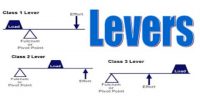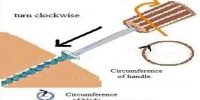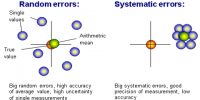Determination of proportional error of a measurable quantity:
Suppose x is a measurable physical quantity. and it is related to two other quantities y and z, in the following equation,
x = ymzn … … … (1)
Here if any error in the measurement of y and z arises then that will be reflected in the measurement of x.
By logarithmic differentiation of equation (1). we get,
δx = mδy + nδz
If ± δy and ± δz are the probable maximum errors in the quantities y and z, then probable maximum error in x will be ± δx.
So, probable maximum proportional error is,
(δx/x)max = m (δy/y) + n (δz/z) … … … (2)
Proportional errors of the quantities (in this case y and z) associated with the measurable physical quantity x are to be determined separately and powers of the associated quantities are to be multiplied with the respective quantity and then these quantities are to be added. Then this added value will give the maximum value of proportional error of the measurable physical quantity (here x). So, more the power of a quantity, more carefully measurement should be taken and then minimum proportional error will appear. For example,
g = (4π2l)/T2
According to the above discussion, maximum proportional error of g is,
δg/g = δl/l + 2 δT … … … (3)
It is seen from equation (3) that for small error in the measurement of T will be doubled in final error.














